The watchmaking industry has certainly come a long way since the introduction of the world’s first modern timepiece.
We as watch enthusiasts have never had a bigger choice of different types of wristwatches which can contrast greatly both in terms of the design and, most importantly, functionalities.
Watches come in all shapes and sizes, and there is definitely a type of watch out there to suit everyone’s taste.
If you’re just dipping your toes into the beautiful world of horology, you might be a bit overwhelmed by the flood of information coming your way. Especially when it comes to discussing types of watches, all the terms and watch features might make you scratch your head from time to time!
Don’t worry, we’re here to help.
In this article, we’ll introduce you to all the different types of watches that are out there.
Spoiler alert: there are more than 40 of them. So, whether you’re looking for your first watch or just curious about the different varieties, grab your favorite cup of tea, sit back and enjoy the lecture.
Disclaimer: As an affiliate, Timepieceking might earn a commission (at no additional cost to you) for purchases made via links in the article.
Introduction to Watch Types
The article you’ve just begun reading is quite lengthy but there’s no other way around it – there’s just so much to discuss and get familiar with!
To keep things tidy and simple to grasp, we will compare varying kinds of watches taking into consideration their specs, such as the dial, overall style, movement, battery type, etc.
Below find the list of all types of watches covered in today’s piece:
- Based on Display Type
- Based on Movement Type
- Based on Functionality
- Based on Style
- Based on Battery Type
Watch Types Based on Display
Categorizing watches depending on the type of display is very common and probably the easiest to remember.
At present, we can distinguish between five watch types based solely on their dials.
-
Analog Watches
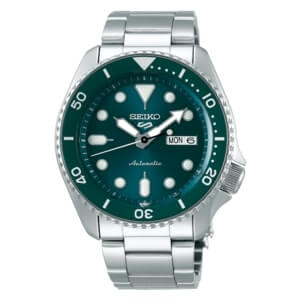
Analog watches have a dial with hands that point to numbers around the edge, which show the time. The hands move continuously and indicate minutes and hours.
Analog watches were the first watch type available. They’re also probably the most popular to this date.
The main benefit of analog watches is that they look neat and can fit different occasions easily. Also, they are relatively easy to read.
On the downside, they can be less accurate than digital watches and they usually don’t have many functions.
They can be powered by either a battery or the kinetic movement of the wearer’s wrist.
-
Digital Watches

Digital watches display the time in digits, either on an LCD or LED screen. They are always powered by a battery and most have a stopwatch and alarm function.
Digital watches are very accurate, usually losing or gaining only a few seconds per month. They are also very versatile, with many different functions to choose from.
The downside is that they can be difficult to read in low light and they usually require battery replacement from time to time.
-
Hybrid Watches

As you have probably guessed from the name, hybrid watches are a combination of analog and digital watch types.
They have an analog dial with hands, but also a digital display. The digital display is usually located at the bottom of the dial and can show different information, such as the day or date.
Hybrid watches are a good compromise between analog and digital watches. They are usually easy to read and have more functions than analog watches. However, due to the more sophisticated look and a bigger number of useful features, they can be more expensive than both analog and digital watches.
-
Tactile Watches

Tactile watches have a dial that can be touched to select different functions.
Often referred to as Braille watches, they are popular among the blind and partially sighted.
They resemble traditional watches in appearance, but the front glass can be flipped up to allow the wearer to touch the hands and, for example, tell the time.
Tactile watches usually come with a limited amount of functions, but this can vary depending on the model.
What’s interesting, the earliest tactile (pocket) timepieces were invented in the early 1800s to allow the owner to quietly know the time without having to take the watch out of his pocket.
Nowadays, because pocket watches are no longer a viable alternative, tactile timepieces are mostly designed for the blind.
-
Touchscreen Watches
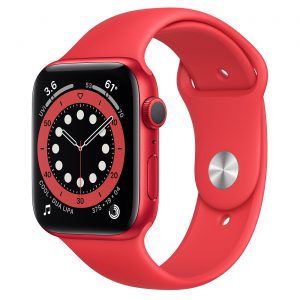
Since more often than not smartwatches have more features than they can accommodate on a single screen, they pretty much always use touchscreens to make it easier to navigate through their menus and other functions.
The watch functionalities are generally operated by tapping the screen, as the name implies.
For example, the Apple Watch still has buttons where the conventional watch crown would be, but it is mostly operated by tapping different choices on the screen.
A touchscreen watch differs significantly from a tactile watch. It generally has a color display and responds to our finger actions (swipe, touch, and push) in the same way as a smartphone does, making it a fun tool to have.
Because of the number of functions and the technological advancement of smartwatches, the touchscreen watch type is growing in popularity year on year. By many, it’s considered the coolest. It’s expected to be the main watch type of the upcoming decades.
Watch Types Based on Movement
The next most common categorization of watch types is based on the movement.
There are three main movement types: quartz, automatic and mechanical.
However, the squeeze out of the topic as much as possible, we will also have a brief look at the most popular alternative movement types.
-
Quartz Watches

Quartz watches are a type of watch that uses a quartz crystal to keep time. A crystal beneath the circuit generates a signal with a specific frequency, and the circuit is powered by a battery.
This type of watch is considered to be more accurate than other types of watches, and oftentimes they are also less expensive.
Quartz watches are always battery-powered, and it’s not unusual for them to have a digital display. Many people choose to buy quartz watches because they are reliable and affordable. The cost of assembling a quartz watch, more often than not, is a lot smaller than the production of a quality automatic timepiece.
While the craftsmanship associated with quartz timepieces is usually not as neat as in the case of automatic counterparts, quartz watch models require minimum maintenance (apart from battery replacements every year or two).
Quartz watches are a relatively fresh concept, as the first model was introduced by Seiko in 1969 – a release that kick-started the industry-shaking Quartz Revolution. The watches have since become a mainstay in the watch market.
Quartz watches were originally seen as a downgrade from traditional mechanical watches. They were viewed as cheap and unimpressive – something that could only be worn by those who couldn’t afford a better timepiece.
However, as the years went on and technology improved, quartz watches slowly started to change people’s minds. By the late 1970s and early 1980s, they were becoming more popular with both men and women.
-
Automatic Watches

In contrast to quartz timepieces, an automatic watch doesn’t need a battery as the watch’s mechanisms are powered by a spring, which is wound by the motion of the wearer’s arm. This type of watch is also known as a self-winding or perpetual motion watch.
There are three main types of automatic watches:
- those with a central rotor
- those with a pendulum
- those with a balance wheel
Central rotor watches are the most common type of automatic watch. They have a weight that rotates on a central axis, which winds the watch’s mainspring.
Pendulum watches have a weight that swings back and forth, which winds the watch’s mainspring.
Balance wheel watches have a balance wheel and hairspring, which oscillate to create energy that powers the watch.
All automatic watches have a rotor mechanism, which is the part of the watch that winds the mainspring. The rotor is located on the rear of the watch movement and usually can be seen through the watch’s caseback which is transparent.
The rotor is connected to the mainspring, which is a coiled spring that stores energy. The mainspring unwinds as the watch runs, and the rotor winds it back up.
The main advantage of an automatic watch is that it does not need to be wound set daily, unlike timepieces with mechanical manually-wound movement which we will discuss next.
The rotor mechanism handles the winding process automatically, so the watch will keep running even if it is not worn for a period of time. This is especially useful for watches that are not worn on a daily basis. Alternatively, you can store such a watch in a watch winder to keep it wound all the time.
The main disadvantage of an automatic watch is that it is often more expensive than a manual watch. Automatic watches require more intricate mechanics and are thus more expensive to produce.
-
Mechanical Watches

Mechanical watches are one of the oldest types of watches and date back to the 16th century.
They work by using a small weight called a “balance wheel” which oscillates back and forth, regulating the time. This type of watch is powered by a mainspring, which needs to be wound up by hand.
One of the benefits of a mechanical watch is that they are fairly accurate, due to the fact that they are regulated by the movement of the balance wheel and require daily winding. They also do not require batteries.
The downside of mechanical watches is that they are usually way more expensive than quartz watches, and they require more frequent servicing than both quartz and automatic types. Also, they usually carry poor water-resistance capabilities.
Mechanical watches are mostly appreciated by collectors and lovers of the vintage watch style. That’s because a good mechanical watch movement is a piece of art and engineering combined.
-
Kinetic Watches

It’s safe to describe kinetic watches as a combination of quartz and automatic mechanisms.
They utilize the best features from both watch types which effectively means:
- they don’t need a battery to run as they are wound by the kinetic movement of your wrist (just like automatic watches)
- they deliver unbeatable accuracy due to the way the rotor movement is converted into electricity (just like in quartz watches)
So how does a kinetic watch work?
The timepiece contains a weighted rotor that spins whenever the watch moves, similar to an automatic watch. However, unlike an automatic watch with a mainspring, a kinetic watch uses an internal dynamo to convert the rotor movement into electricity.
This electricity is then stored in a power cell with a few-month power reserve.
Watches with the kinetic movement type are manufactured exclusively by Seiko.
-
Spring Drive Watches

When it comes to finding the perfect timepiece, many people tend to gravitate towards watches with a spring drive movement.
Spring drive watches are known for their accuracy and reliability, making them a popular choice both amongst everyday wearers and collectors.
Spring drive watches, just like kinetic counterparts, combine automated self-winding mechanisms with quartz accuracy. With that said, spring drive movements offer an even more reliable performance than kinetic. Not without a reason, they are considered one of the most technologically advanced watch movements.
But how does a spring drive watch work?
Akin to automatic watches, spring drive models utilize a mainspring that stores energy and a similar rotor to wind the mainspring. In terms of timekeeping, spring drive relies on a Tri-synchro regulator. It also has an integrated circuit and a quartz crystal to assure the watch’s accuracy.
Just like in the case of kinetic watches, the spring drive mechanism is produced exclusively by Seiko. You can find it in Seiko-owned premium collections of Grand Seiko and Credor.
-
Chronometer Watches
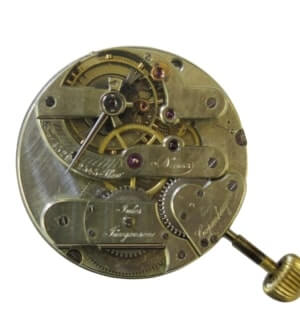
A chronometer watch is a specific type of timepiece that is prized for its accuracy and precision.
These watches are tested and certified by an official body to meet very precise standards, making them some of the most reliable and accurate watches available.
Chronometers fill in the gaps left by automatic watches, which are usually well-crafted but aren’t as precise as quartz watches.
Chronometers are constructed of high-quality materials that do not easily expand or contract as a result of temperature changes. Its movement is also more advanced than the others, allowing it to be more precise.
There are a few different factors that contribute to a chronometer watch’s accuracy.
Firstly, the movement of the watch must be carefully manufactured to precise specifications. The escapement, which is the mechanism that regulates the release of energy in the watch, must also be very accurate.
In order for a watch to be officially certified as a chronometer, it must pass a series of tests that are designed to evaluate its accuracy and precision. These tests are conducted by an independent body, such as the COSC (Contrôle Officiel Suisse des Chronomètres).
The portion of watches stamped with COSC certification is relatively small and the timepieces are quite pricey.
Watch Types Based on Functionality
Gone are the days when watches were solely responsible for telling time.
Nowadays, timepieces can serve so many purposes. Hence, we can distinguish between many different watch types based on their main functionality.
Below find the most popular watch types according to their unique functions.
-
Chronograph Watches
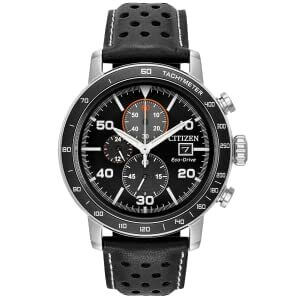
Chronograph watches are timepieces that have the ability to measure elapsed time, using a stopwatch function.
Many chronograph watches also feature additional complications such as a date display or moon phase indicator which we will discuss further down the article.
Chronograph watches are popular among athletes and adventurers, as well as anyone who needs to keep track of time for any reason.
There are many different types of chronograph watches on the market, from simple to complex, and with a wide range of price points. Whether you’re looking for a basic stopwatch function or a watch with multiple functions, there’s a chronograph watch out there to suit your needs.
Chronograph watches first became popular in the 19th century, when they were used by racecar drivers and other athletes. In those days, the stopwatch function was the only thing that made chronograph watches different from regular watches.
Today, however, chronograph watches come in all shapes and sizes, with a variety of features and complications. Some of the most popular chronograph watches include the Rolex Daytona, the Omega Speedmaster, and the Breitling Navitimer.
In addition to being extremely functional, chronograph watches are also considered to be works of art. Many luxury watch brands produce elegant chronographs that are as beautiful to look at as they are useful. With that said, you can easily find a capable chronograph watch below the $100 mark.
-
Tachymeter Watches
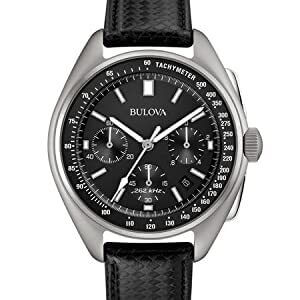
A tachymeter watch is a special type of timepiece that is used to measure the speed of an object.
It works by timing how long it takes for a pre-determined distance to be traveled. This information can then be used to calculate the speed of the object in question.
Most tachymeter watches use a chronograph, which, as you already know, is a mechanism that can time intervals.
The chronograph is activated by pressing a button, and it will time how long it takes for the pre-determined distance to be traveled. Once the distance has been traveled, the chronograph will stop automatically.
The tachymeter scale is then used to calculate the speed of the object. The scale is marked with numbers that represent different speeds. For example, if the distance traveled was one kilometer and it took 60 seconds to travel that distance, then the object was traveling at a speed of 60 kilometers per hour.
Tachymeter watches are often used by racing drivers and other people who need to know how fast they are going. They can also be used by anyone who wants to measure their speed, such as when running or cycling.
-
Calendar Watches

A calendar watch is a watch that displays a day, date, or month, or all three combined.
Watch with this functionality can be either digital (eg. most Casio G-Shocks) or analog.
When it comes to digital watches, the calendar data is usually displayed courtesy of an LCD screen. Analog watches with the function mostly utilize the so-called “date window” or, less frequently, display the calendar data on sub-dials similar to those used in chronograph timepieces.
Calendar watches are often considered to be more sophisticated and stylish than other types of watches.
-
Perpetual Calendar Watches

A perpetual calendar watch is a type of watch that automatically adjusts the date display to account for months of different lengths, and for leap years.
Perpetual calendar watches typically have displays that indicate the day of the week, the date, and the month. Some also include a moon phase complication.
Many perpetual calendar watches are able to account for leap years up to the year 2100, while others can go even further, accounting for leap years up to the year 4000.
The accuracy of these watches can vary, however, so it is important to check the manufacturer’s specifications before making a purchase.
Perpetual calendar watches are popular among collectors and luxury watch enthusiasts, and prices can range from a few hundred dollars to over one hundred thousand dollars.
Some of the most popular brands include Patek Philippe, Jaeger-LeCoultre, and A. Lange & Sohne.
While perpetual calendar watches are generally accurate, there are a few things that can throw off their accuracy.
If the watch is automatic and not wound regularly, the calendar can become inaccurate. Additionally, if the watch is stored in a place where the temperature is not constant, the calendar can also become inaccurate.
-
Moonphase Watches
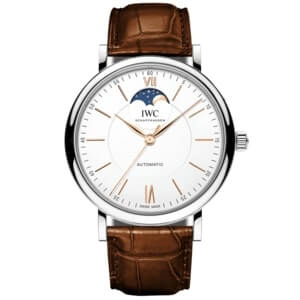
A moonphase watch is a type of watch that tracks the phases of the moon.
Moonphase watches are typically more expensive than regular watches, but they offer a unique and interesting way to keep track of time.
They can be used to track the progress of lunar cycles, or simply to admire the changing face of the moon. Either way, moonphase watches are a beautiful addition to any watch collection.
-
GMT Watches

A GMT watch is a type of watch that displays multiple time zones.
This can be useful for people who travel frequently or have loved ones in different time zones. GMT watches typically have an extra hand that indicates the time in a second time zone, as well as a 24-hour bezel or dial that can be used to track a third time zone. GMT watches are sometimes also referred to as world timers.
While a standard watch only displays the time in one time zone, a GMT watch can display the time in two or more time zones simultaneously. This can be useful for keeping track of the time in multiple time zones at once, which can be helpful when coordinating with people in different locations on the globe.
Most GMT watches have an analog display but there are some models with digital dials as well.
GMT watches are available from a variety of different brands, including Rolex, Omega, and TAG Heuer. They can vary greatly in price, depending on the features and quality of the watch. However, most GMT watches are fairly expensive, with prices oscillating around the $1,000 mark.
-
Racing Watches

A racing watch is a special type of watch that is designed specifically for use while participating in motorsports.
These watches are typically much more durable and rugged than regular watches, and they often feature special features that can be useful while on the track.
Racing watches can be used to keep track of lap times, fuel levels, and other essential information while driving. They can also help drivers stay safe while on the track by providing important information about their surroundings.
Many racing watches are also water-resistant, which can be helpful if drivers need to move through a wet section of the track.
Other features often found in racing watches include a built-in stopwatch that can be used to keep track of lap times, and a tachymeter that measures the speed of a vehicle.
-
ABC Watches

An ABC watch is a watch that combines three essential outdoor tools into one package – altimeter, barometer, and compass.
This type of watch is essential for anyone who enjoys spending time outdoors, whether hunting, mountain biking, or simply exploring new areas. It’s also often referred to as a hiking watch.
Altimeters are used to measure altitude, or the height above sea level. This is useful for hikers and climbers, who need to know how high they are in order to plan their routes and avoid getting lost.
Barometers measure atmospheric pressure, which can be used to predict weather changes. A drop in pressure usually means that bad weather is on the way, so this is an important tool for anyone who spends time outdoors.
Compasses provide directional guidance, helping people to find their way if they get lost.
More often than not, ABC watches are also equipped with a thermometer.
-
Alarm Watches

An alarm watch is a type of wristwatch that has an alarm feature.
This means that the watch can be set to sound an alarm at a specific time. Alarm watches are often used to wake people up in the morning or to remind them of something important.
Most alarm watches have a digital display, which makes it easy to see the time and set the alarm. Some alarm watches also have a backlight, so you can see the time in the dark.
There’s a small portion of timepieces that have a vibrate feature, which can be helpful if you need to be discreet.
-
Nurse Watches

A nurse watch is a timepiece worn by nurses to help them keep track of their shifts. They are typically simple and functional, with a plain face and easy-to-read numbers.
A 24-hour dial, as well as a contrasting second hand, are commonly employed in the medical field to accurately time anything from medication timings to pulse rates. Some watches include a luminous dial, which makes it easier to read the time in low light.
Because of the frequent exposure to water in this line of work, an easily cleanable band is a characteristic of this kind.
-
Dive Watches
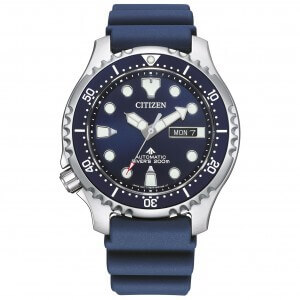
A dive watch is a type of wristwatch that is designed for underwater diving.
Dive watches are typically water-resistant to depths of at least 100 meters (330 ft) and have features that make them useful for divers, such as a unidirectional bezel that can be used to time dives. Some dive watches also include compasses or other features that can provide further assistance during leaps.
Dive watches are typically made from stainless steel or other durable materials and have a screw-down crown that helps to keep water out of the watch. They also often have luminous hands and markers, so that they can be read underwater.
Dive watches are popular among both recreational and professional divers and are often used by dive schools to teach students how to time their dives. Many scuba-diving watches also include a depth gauge, which can be used to measure the depth of a dive.
They are available in a variety of styles, with both analog and digital displays.
While dive watches are primarily designed for use underwater, they can also be worn as everyday timepieces. Many people appreciate the ruggedness and durability of dive watches, as well as their unique style.
One of the best value-for-money dive watches are manufactured by Seiko and Citizen.
-
Military Watches

A military watch is a timepiece that is originally designed for use by soldiers, sailors, and other members of the armed forces.
With that said, some consider a military watch one that comes with military-inspired design and colors.
These watches are typically rugged and durable, and can withstand harsh conditions.
Military watches may also feature special features such as night-vision compatibility, water resistance, and compass functions. Some models are even designed to be used as survival tools, and include features such as a blade, a fire starter, or a whistle.
Military watches have been around for decades and were first developed to help soldiers keep track of time during battle. Today, they are still used by the military for tasks such as navigation and timing bomb explosions.
However, they are also becoming increasingly popular among civilians as well. The durability and features of military watches are appreciated by people from different walks of life such as firefighters, EMTs and construction workers.
If you’re looking for a watch that can stand up to any challenge, then a military watch may be the perfect choice for you. Feel free to check out our list of top military watches under $200 for some ideas.
-
Field Watches

A field watch is a basic military-inspired watch that is meant to tell precise time without the extra features found on other tool watches (eg. the above military type).
Field watches, sometimes known as “trench watches”, were created for soldiers to wear during WWII. To avoid losing the watch in the field of war, field watches are normally composed of stainless steel casings with a strong canvas or leather Nato or Zulu strap.
-
Pilot Watches

A pilot watch is a type of wristwatch that is specifically designed for pilots.
It typically includes features that are beneficial for pilots, such as an oversized dial, luminous markings, and a rotating bezel that can be used to calculate speed or track elapsed time. Pilot watches also often include other features that are helpful in aviation, such as a chronograph, a tachymeter, and a GMT function.
Pilot watches are available in both mechanical and quartz varieties, and they come in a variety of styles, including both analog and digital watches. Some of the most popular pilot watch brands include Breitling, IWC, Omega, and Rolex.
Pilot watches are usually on the pricier side, but they offer a unique look, as well as a decent level of functionality and durability that is well worth the price for many pilots.
-
Smartwatches

A smartwatch is a wearable device that can perform many of the same tasks as a smartphone.
Smartwatches usually have a touchscreen display and can connect to the internet using either Bluetooth or Wi-Fi. They can also run apps, track fitness data, and receive notifications from smartphones. Many smartwatches include features such as heart rate monitors and GPS tracking.
While the first generation of smartwatches was not very popular, the market for them has grown in recent years. In 2021, global sales of smartwatches reached 127 million units, and this result is expected to keep improving for the next decade at least.
The leading brands in the smartwatch market include Apple, Samsung, and Fitbit although budget smartwatch manufacturers are also growing in popularity.
So what are the benefits of owning a smartwatch?
Well, for starters, they can make your life a lot easier by allowing you to access important information without having to pull out your smartphone. Smartwatches can also help you stay healthy and active by tracking your fitness data. So technologically advanced are some of the newly-released models that they can track anything from irregular heartbeat to blood oxygen levels to sports performance.
And last but not least, they can simply be fun and stylish accessories to help you express your personality.
On the other hand, there’s definitely a huge room for improvement when it comes to the battery performance of smartwatches.
If you’re thinking about purchasing a smartwatch, it’s important to consider what you want to use it for.
Some people use them primarily for fitness tracking, while others find them more useful for tasks such as checking email, calendar appointments, and social media notifications. Whatever your needs may be, there is sure to be a smartwatch that fits them.
-
Fitness Trackers

A fitness tracker is a wearable device that monitors and tracks fitness and activity data.
Smartwatches are also wearable devices, but they are not specifically designed for tracking fitness data.
Fitness trackers usually have more sensors than smartwatches, which allows them to track more detailed data about your activity and fitness. Additionally, they often have more dedicated performance apps than smartwatches, which allow you to track and analyze your progress and analyze in more detail.
However, smartwatches are typically more versatile devices, as they can run other types of apps in addition to fitness tracking apps.
Ultimately, the choice between a fitness tracker and a smartwatch depends on what you are looking for in a wearable device.
If you are primarily interested in tracking your fitness data, then a fitness tracker is a better option.
However, if you are looking for a more versatile wearable device that can do more than just track your fitness, then a smartwatch is a better choice.
-
Hybrid Smartwatches

Last but not least, there’s the interesting case of hybrid smartwatches.
A hybrid smartwatch is a type of smartwatch that combines the best features of both traditional watches and smartwatches.
Hybrid smartwatches have a more classic look and feel, with analog watch hands and a digital display. However, they also have many of the same features as smartwatches, such as the ability to track fitness data, receive notifications, and control smartphone apps.
At the moment, the number of brands offering hybrid smartwatches is still relatively small. Two that are well worthy of a mention are Fossil and Kronaby.
As you already know, traditional watches have been around for centuries and are known for their accuracy, durability, and simple design. Smartwatches, on the other hand, are relatively new to the scene but have quickly become popular due to their many features and capabilities. A hybrid smartwatch is the perfect middle ground, combining the best of both worlds.
They look like traditional watches, but they also have a digital display and other features that make them act like smartwatches. This makes them a great option for those who want the accuracy and simplicity of a traditional watch with some of the features of a smartwatch.
Watch Types Based on Style
Watch style is another way in which we can distinguish between different watch types.
-
Casual Watches
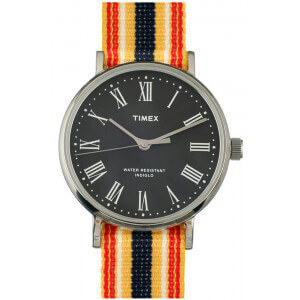
A casual watch is a type of wristwatch that is designed for everyday, informal wear.
These watches are typically lighter and more comfortable than watches oscillating in the dressy spectrum, and they often have more relaxed styling. They can be made from a variety of materials, including plastic, metal, and leather.
Casual watches are the perfect accessory if you want to look put-together without dressing up. They add a touch of elegance to any outfit, and they’re perfect for everyday wear.
If you’re looking for a versatile watch that can be worn with any outfit, a casual watch is a perfect option.
-
Designer Watches
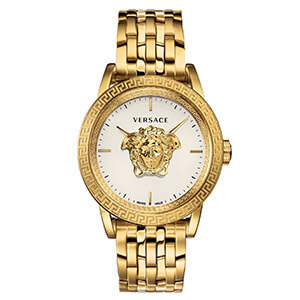
Just like a casual watch, the designer watch type is to be worn as a fashion accessory, rather than for utility purposes.
A designer watch is one that is manufactured by a popular brand that doesn’t necessarily specialize in timepieces but fashion in general. One of the first names that spring to mind are the likes of Versace, Gucci, and Maserati.
Designer watches are often characterized by their flashy designs and colorful patterns. Many fashion watches also feature crystals or other embellishments on the face or strap.
-
Dress Watches
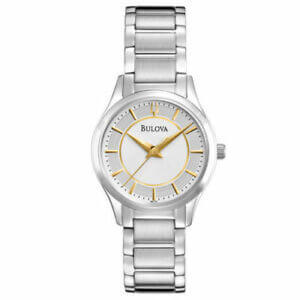
A dress watch is a type of watch that is designed to be worn with formal attire. It typically has a thin profile and a simple design and is often made from gold or silver.
Dress watches are usually not as flashy or intricate as other types of watches, and they are meant to be subtle and understated.
Many people believe that a dress watch should be able to be worn with any type of outfit, but this is not necessarily the case.
While a dress watch can technically be worn with anything, it is generally considered more appropriate to wear them with more formal clothing. For example, a dress watch would pair well with a suit or a cocktail dress but might look out of place with jeans and a t-shirt.
Dress watches are not necessarily expensive, but they can be. Some high-end brands like Cartier or Rolex make dress watches that cost thousands of dollars. However, there are also many affordable dress watches on the market that look just as good as their more expensive counterparts.
-
Sport Watches

A sports watch is a type of wristwatch that is designed for use while participating in sports or other physical activities.
Sporty watches may have features such as stopwatches, lap timers, and alarms, which are useful for keeping track of time and progress during a workout or race. Some sport watches also include GPS receivers, which can be used to track your location and distance covered.
Sport watches are usually made from durable materials such as stainless steel or titanium, and they often have large, easy-to-read displays.
Many sports watches are also shock and water-resistant, so you can wear them while swimming or showering. If you’re looking for a watch that can keep up with your active lifestyle, a sports watch might be the perfect choice.
-
Kids Watches

There are many different types of kids’ watches on the market, but there are some common characteristics that most of them share.
For example, most kids’ watches are designed to be durable and water-resistant, since kids are often very active and tend to be hard on their belongings.
Additionally, most kids’ watches feature brightly colored straps and faces, which makes them fun and appealing to children. Some kids’ watches also include educational features, such as timers or stopwatches, which can help teach children how to time things or measure elapsed time.
Lastly, most kids’ watches are relatively affordable, making them a cost-effective choice for parents.
-
Luxury Watches

Luxury watches are often made with precious metals and stones, and their designs are often intricate and detailed. Luxury watches are a symbol of wealth and success and are often given as gifts to mark special occasions.
Apart from the head-turning exterior, what distinguishes luxury watches from other groups is the quality of movements they utilize. Most run on Swiss-made calibers which have been the gold standard for centuries.
Many people believe that luxury watches are a wise investment, as they can appreciate in value over time.
There are a wide variety of luxury watches available on the market, from brands such as Rolex, Cartier and Omega.
Luxury watches can often be quite expensive, but for those who appreciate the finer things in life, they are well worth the investment. If you are looking to purchase a luxury watch, it is important to do your research and find the one that is right for you. There are many different factors to consider, such as the brand, the style, and, naturally, the price.
If you are looking for a luxurious addition to your wardrobe, a luxury watch is the right option. They are sure to impress your friends and colleagues, and they will last a lifetime if well taken care of.
-
Skeleton Watches

A skeleton watch is a type of watch that has an open-faced design.
This means that the movement of the watch is visible from the front, and the mechanisms that power it are on display. Very often, also the watch’s caseback is transparent so you can peek at the intricate workings of the movement from behind.
This style of watch became popular in the 18th century, and many skeleton watches are still made today. They are often considered to be works of art, and some are very expensive.
-
Tourbillon Watches

A tourbillon watch is a timepiece that features a rotating escapement, which helps to cancel out the effects of gravity on the watch’s accuracy.
A balancing wheel and an escapement in a small cage make up the tourbillon, which means “whirlwind” in French.
The tourbillon was invented by Pierre Jaquet-Droz in 1758, and it is considered to be one of the most complicated mechanisms in a watch created to this day.
While tourbillon watches were once considered to be a luxury item, they are now more commonly seen as a high-end watch option. Prices for tourbillon watches can range from a few hundred dollars to well over $100,000.
Watch Types Based on Battery Type
Last but not least, we can also categorize watches according to the type of battery they use.
-
Quartz Watches

Quartz watches are primarily powered by a battery, which causes the quartz crystal within to vibrate at a certain frequency.
Although quartz watches are more precise than automatic counterparts, the negative is that you must replace the battery on a regular basis to preserve accuracy.
The battery used in quartz watches is typically a small, round cell that is about the size of a dime. These cells are made up of a type of mercury battery called a button cell.
Button cells are named for their shape, which is more or less cylindrical with a flat top and bottom. They get their name from the fact that they are often used to power small devices, such as watches, calculators, and hearing aids.
-
Lithium-Ion Watches

Smartwatches use a variety of different battery technologies, but one of the most popular is lithium-ion.
Lithium-ion batteries are small, lightweight, and have a high energy density, making them ideal for wearable devices. They can also be recharged hundreds of times, making them a more sustainable option than other battery technologies.
While lithium-ion batteries are not perfect—they can be subject to thermal runaway and fires if damaged—they are still the best option for most smartwatch applications.
-
Solar-Powered Watches

A battery in a solar-powered watch works by converting energy from the sun into electrical energy. This electrical energy powers the watch and keeps it running.
The battery in a solar-powered watch is typically a rechargeable lithium-ion battery, which can be recharged by exposing it to light. Some solar-powered watches also have a manual winding mechanism, which can be used to charge the battery if it is not exposed to enough light.
Some renowned watchmakers use their own solar technologies, such as Tough Solar by Casio or Eco-Drive by Citizen.
All Watch Types: Conclusion
With all of the different types of watches on the market today, it can be hard to know which one is right for you.
But with a little bit of research, you’re sure to find the perfect timepiece to suit your needs.
We hope this article has helped give you a better understanding of the different kinds of watches available and shown you where to find them at great prices.
Also, should you wish to further expand your horological knowledge, feel free to read other articles from our Watchopedia:
- Types of Watch Indices
- Different Kinds of Watch Clasps
- Different Types of Watch Crystals
- Watch Batteries
- Watch Jewels
- Types of Watch Bezels
- Ways of Wearing Watches
Thanks for reading!

